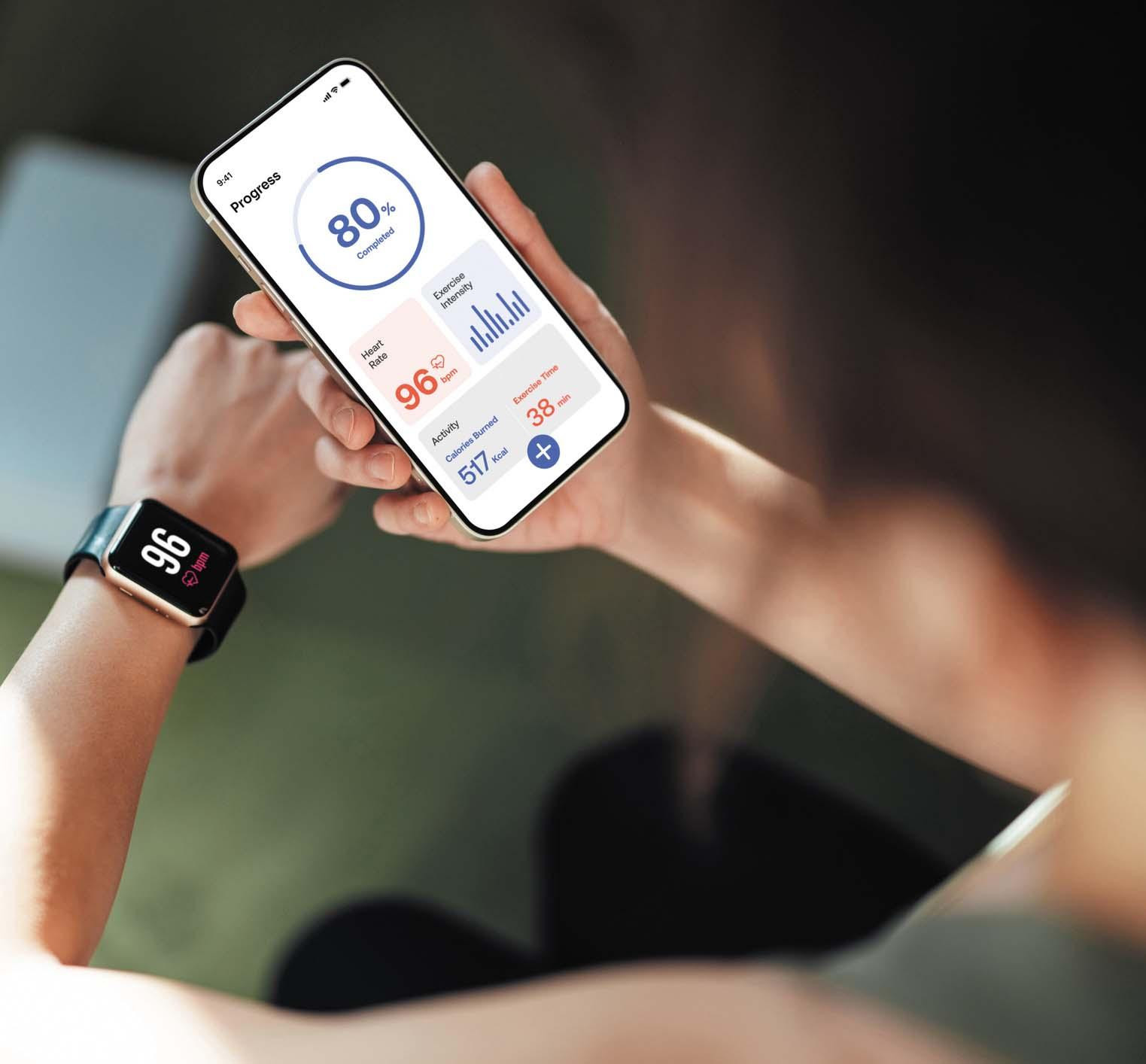
5 timeless habits for better health

What are the symptoms of prostate cancer?

Is your breakfast cereal healthy?

When pain signals an emergency: Symptoms you should never ignore

Does exercise give you energy?

Acupuncture for pain relief: How it works and what to expect

How to avoid jet lag: Tips for staying alert when you travel

Biofeedback therapy: How it works and how it can help relieve pain

Best vitamins and minerals for energy

Should you take probiotics with antibiotics?
Physical Activity Archive
Articles
Smarter, safer workouts with a wearable fitness tracker
Wearable fitness trackers like smart watches offer measurable and motivating data for exercise routines and safety, especially for people with heart conditions. Features include movement reminders, step counts (a daily total of 4,000 to 7,000 steps is considered beneficial), heart rate zones for exercise intensity, and measurements of heart rate recovery and variability to assess overall heart health. These tools can help optimize workouts and reveal potential issues.
What are the benefits of walking with a weighted vest?
Walking while wearing a weighted vest or backpack can help build muscle strength and bone density, improve the heart’s pumping ability, expand lung capacity, and burn additional calories. People with neck or back pain should not wear a weighted vest.
Weight training may protect the brain from cognitive decline
A small 2025 study found that older adults who did six months of weight training improved their ability to recall recent events and information. They also had had less brain shrinkage in regions affected by Alzheimer’s disease, compared with people who did not do the training.
Try this: Laughter yoga is nothing to joke about
Laughter yoga blends traditional yoga movements with laughter therapy to offer a playful approach to stress management. The group sessions consist of physical exercises and stretches, relaxation and breathing techniques, and forced smiling and vigorous laughter.
Even a “weekend warrior” exercise pattern can lower heart risks
A 2025 study suggests that squeezing a week’s worth of exercise (150 minutes) into just one or two days — a “weekend warrior” pattern — is linked to the same heart benefits as daily exercise.
More than a stretch: How yoga can enhance heart health
A regular yoga practice may help people shed pounds while also improving their heart health. A form of low- to moderate-intensity aerobic exercise, yoga also stretches and strengthens muscles. A 2025 review article suggests that yoga can decrease body mass index, waist circumference, and body fat percentage while also improving blood pressure and cholesterol values.
Physical activity of any intensity tied to lower cancer risk
In a 2025 study of more than 85,000 people (average age 63), followed for six years, those who were the most active—even if they were simply doing light-intensity activities—had a 26% lower risk for cancer, compared with those who were least active.
How to fill out a “flat” behind
Older men can get “flat” or weak buttocks from spending too much time sitting, which can weaken gluteal muscles and create tight hip flexors. This weakness can place excess demand on other parts of the body, which can lead to pain in the lower back, hips, and knees and increase risk for lower-body injuries. The best way to strengthen a weak backside is to break up prolonged periods of sitting with regular movement and perform exercises that build up gluteal muscles, such as deadlifts, bridges, and step-ups.
3 do-at-home stretches to release hip and buttock pain
To reduce the pain of aching hip or buttocks muscles, one might consider stretching them. The activity makes muscles healthier and more flexible, which might keep them from pressing against nerves or bursae that can become inflamed and tender. It’s best to stretch regularly with static stretches of the muscles at least three to five times per week, after a brief warm-up or a regular exercise routine. If hip or buttock pain flares, doing gentle stretches might ease discomfort in the moment.
Morning blue light therapy may offer many benefits for older adults
Daily morning exposure to blue-enriched light can improve sleep quality and increase activity levels in older adults, according to a 2025 study. Researchers believe morning blue light "wakes up" the brain, which increases alertness and synchronizes the sleep-wake cycle.

5 timeless habits for better health

What are the symptoms of prostate cancer?

Is your breakfast cereal healthy?

When pain signals an emergency: Symptoms you should never ignore

Does exercise give you energy?

Acupuncture for pain relief: How it works and what to expect

How to avoid jet lag: Tips for staying alert when you travel

Biofeedback therapy: How it works and how it can help relieve pain

Best vitamins and minerals for energy

Should you take probiotics with antibiotics?
Free Healthbeat Signup
Get the latest in health news delivered to your inbox!
Sign Up











